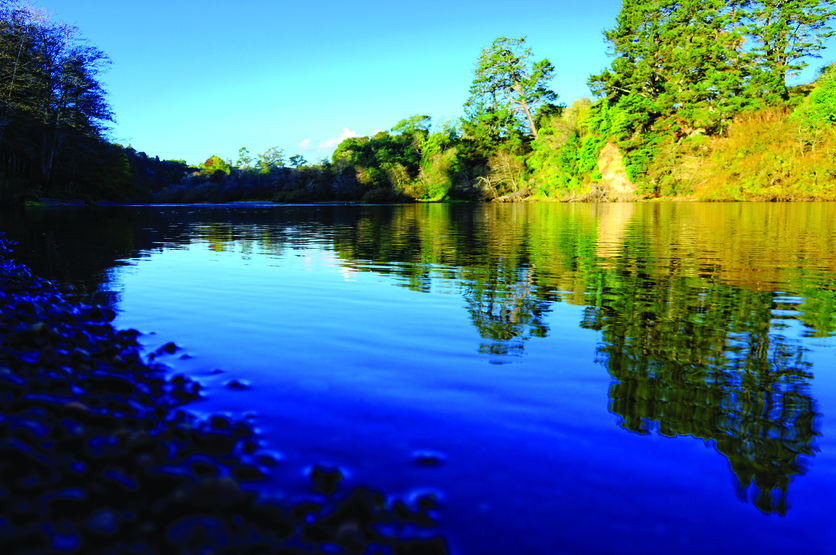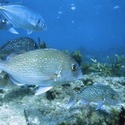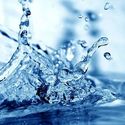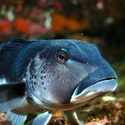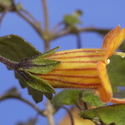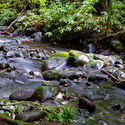The ecology of the river refers to the relationships that living organisms have with each other and with their environment – the ecosystem. An ecosystem is the sum of interactions between plants, animals and microorganisms and between them and non-living physical and chemical components in a particular natural environment.
River ecosystems have:
- flowing water that is mostly unidirectional
- a state of continuous physical change
- many different (and changing) microhabitats
- variability in the flow rates of water
- plants and animals that have adapted to live within water flow conditions.
Water flow
Water flow is the main factor that makes river ecology different from other water ecosystems. This is known as a lotic (flowing water) system. The strength of water flow varies from torrential rapids to slow backwaters. The speed of water also varies and is subject to chaotic turbulence. Flow can be affected by sudden water input from snowmelt, rain and groundwater. Water flow can alter the shape of riverbeds through erosion and sedimentation, creating a variety of changing habitats.
Substrate
The substrate is the surface on which the river organisms live. It may be inorganic, consisting of geological material from the catchment area such as boulders, pebbles, gravel, sand or silt, or it may be organic, including fine particles, leaves, wood, moss and plants. Substrate is generally not permanent and is subject to large changes during flooding events.
Light
Light provides energy for photosynthesis, which produces the primary food source for the river. It also provides refuges for prey species in the shadows it casts. The amount of light received in a flowing waterway is variable, for example, depending on whether it’s a stream within a forest shaded by overhanging trees or a wide exposed river where the Sun has open access to its surface. Deep rivers tend to be more turbulent, and particles in the water increasingly weaken light penetration as depth increases.
Temperature
Water temperature in rivers varies with the environment. Water can be heated or cooled through radiation at the surface and conduction to or from the air and surrounding substrate. Temperature differences can be significant between the surface and the bottom of deep, slow-moving rivers. Climate, shading and elevation all affect water temperature. Species living in these environments are called poikilotherms – their internal temperature varies to suit their environmental conditions.
Water chemistry
The chemistry of the water varies from one river ecosystem to another. It is often determined by inputs from the surrounding environment or catchment area but can also be influenced by rain and the addition of pollution from human sources.
Oxygen is the most important chemical constituent of river systems – most organisms need it for survival. It enters the water mostly at the surface, but its solubility decreases as the water temperature increases. Fast, turbulent waters expose a wider water surface to the air and tend to have lower temperatures – achieving more oxygen input than slow backwaters. Oxygen is limited if water circulation is poor, animal activity is high or if there is a large amount of organic decay in the waterway.
Bacteria
Bacteria are present in large numbers in river waters. They play a significant role in energy recycling. Bacteria decompose organic material into inorganic compounds that can be used by plants and by other microbes.
Plants
Plants photosynthesise – converting light energy from the Sun into chemical energy that can be used to fuel organisms’ activities.
Algae are the most significant source of primary food in most rivers or streams. Most float freely and are therefore unable to maintain large populations in fast-flowing water. They build up large numbers in slow-moving rivers or backwaters. Some algae species attach themselves to objects to avoid being washed away.
Plants are most successful in slower currents. Some plants such as mosses attach themselves to solid objects. Some plants are free-floating such as duckweed or water hyacinth. Others are rooted in areas of reduced current where sediment is found. Water currents provide oxygen and nutrients for plants. Plants protect animals from the current and predators and provide a food source.
Invertebrates
Invertebrates have no backbone or spinal column and include crayfish, snails, limpets, clams and mussels found in rivers. A large number of the invertebrates in river systems are insects. They can be found in almost every available habitat – on the water surface, on and under stones, in or below the substrate or adrift in the current. Some avoid high currents by living in the substrate area, while others have adapted by living on the sheltered downstream side of rocks. Invertebrates rely on the current to bring them food and oxygen. They are both consumers and prey in river systems.
Fish
The ability of fish to live in a river system depends on their speed and duration of that speed – it takes enormous energy to swim against a current. This ability varies and is related to the area of habitat the fish may occupy in the river. Most fish tend to remain close to the bottom, the banks or behind obstacles, swimming in the current only to feed or change location. Some species never go into the current. Most river systems are typically connected to other lotic systems (springs, wetlands, waterways, streams, oceans), and many fish have life cycles that require stages in other systems. Eels, for example, move between freshwater and saltwater. Fish are important consumers and prey species.
Birds
A large number of birds also inhabit river ecosystems, but they are not tied to the water as fish are and spend some of their time in terrestrial habitats. Fish and water invertebrates are an important food source for water birds.
Related content
Learn more about the ecology and biodiversity of the Waikato River.
Activity ideas
River connections help students visualise the interdependence of species within a river environment.
Biodiversity battleships explores biodiversity risks and potential consequences of species loss.
Useful link
Visit the Kids Greening Taupo Online Nature Classroom with a focus on River Ecosystems.


